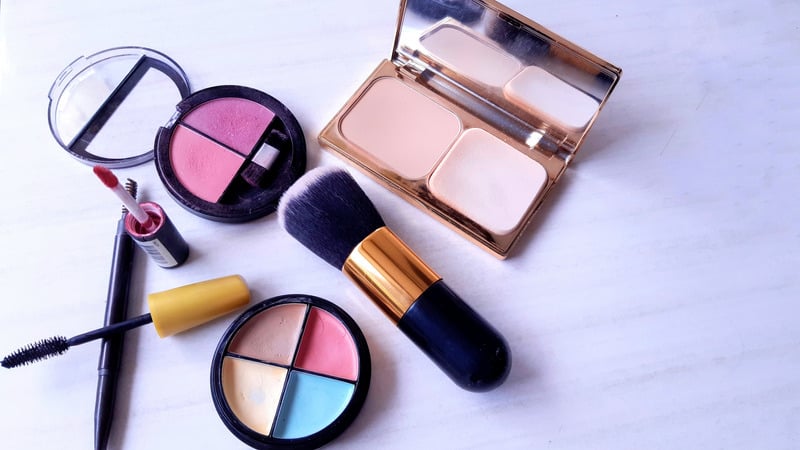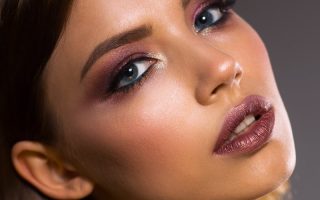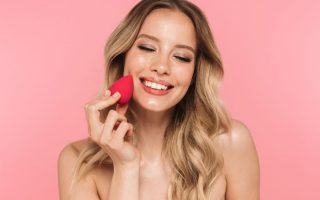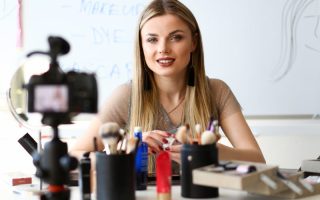Starting your makeup journey can be both exciting and overwhelming. With so many products available, it can be hard to know where to begin. This guide will help you build a starter kit with essential products that are easy to use and perfect for beginners. Let’s dive into the world of makeup and explore how to create a simple yet effective kit that will have you looking and feeling your best.
Understanding Your Skin
Identify Your Skin Type
Before you start buying makeup, it’s essential to understand your skin type. Knowing whether you have oily, dry, combination, or sensitive skin will help you choose products that work best for you. For example, if you have oily skin, you might prefer matte foundations and powders. If you have dry skin, hydrating products like creamy foundations and moisturizers will be more suitable.
Choose Appropriate Products
Scott Barnes, a renowned makeup artist, emphasizes choosing products that suit your skin type and lifestyle (Scott Barnes’ Master Class). This approach ensures that your makeup looks flawless and feels comfortable on your skin.
Essential Makeup Products for Beginners
Primer
A good primer is the first step to creating a smooth base for your makeup. It helps your foundation go on more evenly and last longer. For beginners, look for a primer that addresses your specific skin concerns, such as mattifying for oily skin or hydrating for dry skin.
Foundation
Foundation evens out your skin tone and provides a base for the rest of your makeup. Choose a foundation that matches your skin tone and type. Liquid foundations are versatile and easy to blend, making them a great option for beginners. Test the foundation on your jawline to find the perfect match.
Concealer
Concealer is used to cover up blemishes, dark circles, and other imperfections. A creamy, blendable concealer is ideal for beginners. Apply it under your eyes and on any spots that need extra coverage.
Setting Powder
Setting powder helps to set your foundation and concealer, reducing shine and keeping your makeup in place all day. A translucent powder is a good option for beginners as it works on all skin tones and helps control oil without adding extra color.
Blush
Blush adds a healthy flush to your cheeks and can brighten up your complexion. For beginners, a powder blush is easy to apply and blend. Choose a shade that complements your skin tone for a natural look.
Bronzer
Bronzer can add warmth and dimension to your face. Use it to contour your cheeks, forehead, and jawline for a sun-kissed glow. A matte bronzer is a great starting point for beginners.
Highlighter
Highlighter adds a subtle glow to your skin. Apply it to the high points of your face, such as your cheekbones, brow bones, and the bridge of your nose. A powder highlighter is easy to use and blend.
Eyeshadow
A neutral eyeshadow palette with a mix of matte and shimmer shades is perfect for beginners. It allows you to create a variety of looks, from natural to more dramatic. Stick to neutral tones like browns, beiges, and soft pinks for versatility.
Eyeliner
Eyeliner can define your eyes and make them stand out. A pencil eyeliner is a good choice for beginners because it is easy to control and can be smudged for a softer look. Choose a brown or black pencil for everyday use.
Mascara
Mascara enhances your lashes, making them look longer and fuller. Opt for a lengthening and volumizing mascara for a noticeable difference. Make sure to replace your mascara every three months to prevent clumping and maintain hygiene.
Eyebrow Pencil or Gel
Well-groomed eyebrows frame your face and complete your look. An eyebrow pencil or gel helps fill in sparse areas and define your brows. Choose a shade that matches your natural eyebrow color.
Lipstick or Lip Gloss
Finish your look with a swipe of lipstick or lip gloss. For beginners, start with neutral shades like pinks, nudes, or soft reds. These colors are versatile and can be worn for any occasion.
Tools and Brushes
Essential Brushes
Investing in quality brushes can elevate your makeup game. Charlotte Tilbury, a renowned makeup artist, recommends using the right tools for the best results (Charlotte Tilbury’s Makeup Magic). Here are a few essential brushes to include in your starter kit:
- Foundation Brush: For applying and blending foundation.
- Concealer Brush: For precise application of concealer.
- Powder Brush: For setting your makeup with powder.
- Blush Brush: For applying blush to the apples of your cheeks.
- Eyeshadow Brushes: A few different sizes for applying and blending eyeshadow.
- Eyeliner Brush: For applying gel eyeliner or smudging pencil eyeliner.
- Brow Brush: For defining and grooming your eyebrows.
Beauty Sponge
A beauty sponge is a versatile tool for applying and blending foundation, concealer, and even cream blush or highlighter. Use it damp for a flawless, airbrushed finish.
Building Your Collection Gradually
Bobbi Brown, a makeup artist, advises starting with a few essential products and building your collection over time (Bobbi Brown’s Makeup Manual). This approach allows you to experiment with different products and find what works best for you without feeling overwhelmed.
Tips for Applying Makeup
Start with Clean Skin
Always start with a clean, moisturized face. This ensures that your makeup goes on smoothly and lasts longer.
Less is More
When it comes to makeup, less is often more. Start with a small amount of product and build up if needed. This prevents your makeup from looking heavy or cakey.
Blend, Blend, Blend
Blending is key to achieving a natural, seamless look. Take your time to blend your foundation, concealer, and eyeshadow to avoid harsh lines.
Practice Makes Perfect
Don’t be afraid to experiment with different looks and techniques. Pat McGrath, a makeup artist, encourages beginners to have fun and express themselves through makeup (Pat McGrath’s Master Class). Practice makes perfect, so keep experimenting until you find your style.
Personal Experience and Insights
When I first started using makeup, I remember feeling overwhelmed by the sheer number of products available. I began with a simple foundation, concealer, and mascara routine. Over time, I added blush, eyeshadow, and lip products as I became more comfortable with my skills. I found that experimenting with different looks and techniques helped me discover what worked best for my skin type and personal style. One tip that has always stuck with me is to blend everything well. Blending ensures that my makeup looks natural and seamless, which is especially important for a beginner.
Studies and Insights
The Impact of Makeup on Confidence and Self-Esteem
A study published in the Journal of Cosmetic Dermatology found that wearing makeup significantly increased participants’ confidence and self-esteem. This highlights the positive psychological effects of makeup and its role in personal expression and self-confidence.
Understanding the Preferences and Behaviors of Beginner Makeup Users
A survey presented at the American Academy of Dermatology Annual Meeting explored the preferences and behaviors of beginner makeup users. The study revealed that most beginners prefer simple, easy-to-use products that enhance their natural beauty. It also found that investing in quality tools and gradually building a makeup collection were common practices among new users.
Conclusion
Building a starter makeup kit doesn’t have to be overwhelming. By starting with essential products that suit your skin type and lifestyle, you can create a versatile and effective kit. Remember to invest in quality tools, practice your application techniques, and have fun experimenting with different looks. Makeup is a powerful tool for self-expression and confidence, so enjoy the journey and discover what makes you feel your best.



